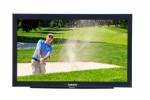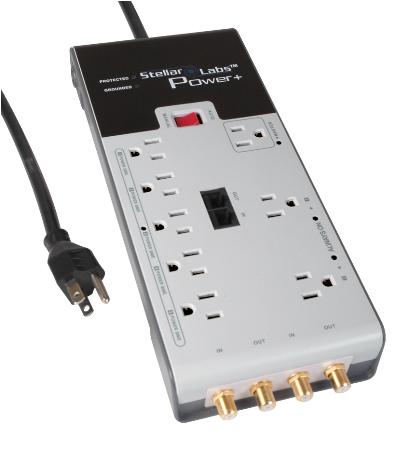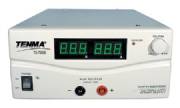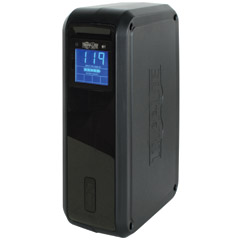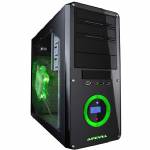Often, one of the most daunting tasks that the beginning speaker-builder faces is building a crossover from scratch. It is easy enough to look at and understand a printed crossover schematic, but it is an altogether different matter to actually build it out of real components. It is a little trickier than it at first seems, and often even seeing a picture of someone's completed crossover doesn't really help that much. I remember spending hours trying to figure out where to put all of the different components and not take up half my enclosure!
Since the DIY community is built on the contributions of many people, you will find a wide variety of different ways that a crossover schematic is drawn. Everybody seems to use different software or method for hand writing his or her circuit. Some show each driver with its own completely separate circuit, some branch off in different directions from the same input, and some show grounding points instead of complete circuit paths. Once you practice by looking at a few different types and seeing how they relate, it becomes fairly easy to translate from one type of schematic to the other.
Also, let me mention that many of the following tips and methods work best for parallel crossovers. These are the most common crossovers that you see, and can be identified by sharing the same input for each driver section. Each has its own "branch" of the circuit, and is essentially independent of the other(s). Physically laying out a series crossover is similar, but conceptualizing from the written schematic is more difficult.
In this article, we are going to focus our energies on one specific crossover design, that from the Dr. K's MTM design. This is a two-way crossover, but is fairly complex and uses a decent number of components. A two-way crossover is somewhat easier to work with, and makes a much better illustration of the basic principles.
For me to best visualize how a crossover will physically lay out, I prefer to convert it into the type of schematic that shows all the negative connections as grounds. (I usually just do this mentally, but for a complicated crossover, it doesn't hurt to sketch it out.) *see drawing #1
Next, I mentally "flip" the lower portion of the crossover so that all of the grounding points are facing towards each other. *see drawing #2
Now, we can start to see that there is some degree of physical organization showing up in the schematic. To take it as far as we can on paper, I'm going to start to replace some of the symbols with drawings, and tie together the grounding points, which are all shared. I haven't drastically changed the component layout, but rather just made all the ground nodes come together to a common point. I then added the input, tweeter, and woofer + and - wires to the drawing. *see drawing #3
 Drawing #1
Drawing #1 Drawing #2
Drawing #2 Drawing #3
Drawing #3
After having conceptualized the layout mentally and on paper, it is now time to start to lay out the crossover for real. This is done on the workbench, as I have not yet cut the "board" that the crossover will attach to. To avoid extra connections and making jumpers, I prefer to make all of my component connections point to point. To make a pseudo-joint, I like to twist component lead wires together. This will make a connection that is more than adequate for testing and layout purposes, and which can be turned into a permanent connection by soldering. Or, if there is a problem with the layout, the components can be un-twisted and re-arranged. *see layout #1
As you can see, I was able to lay out the crossover nearly identical to my rough sketch that I made from the schematic. This is a good starting point, and would be functional if needed as the final crossover, but only if it was for a large system. For a small bookshelf speaker like the Dr. K's MTM, we need to further condense the crossover.

This is an important time to talk about inductors and how they should be positioned in the crossover. Because inductors operate electromagnetically, they inherently create a magnetic field around themselves as a signal passes through them. If two inductors are placed close enough to each other, the fields can interact and cause what is called inductive coupling. This coupling is not a dangerous phenomenon, but it can cause your crossover to work less than optimally. So, to minimize this coupling and its potential negative effects, we want to leave as much space between inductors as possible. In general, 3 or 4 inches should be sufficient to minimize the potential for problems.
However, in compact speaker systems, or crossovers with many inductors, having 3-4 inches of space between every inductor simply is not practical. So, there is another technique for minimizing the inductive coupling: having physically close inductors oriented on different axes. This is often described as making sure each inductor is perpendicular to one that is close to it. The way I like to think of it is that if you look through the "hole" in the center of one inductor, you want to make sure you can't "see" another inductor immediately near it. This may be a somewhat oversimplified method, but it does work as a quick check to make sure that the layout is on the right track. *see image #1
Even when inductors on different axes, you still want to maintain as much distance between them as practical. This overall process of orienting the inductors is one of the more difficult parts of laying out the crossovers, due to the many different possible combinations of orientation. I usually try to keep the biggest inductor or inductors flat on the board, and then work my way away from them rearranging each coil so that it is not interacting with the next.

Going back to the crossover at hand, I will begin to condense the layout, keeping in mind the inductor placement factors as above. Carefully bend and arrange the components so that they are close together, but that all connections stay intact. Without too much rearranging, I was able to condense the crossover size to about 6" by 8". *see layout #1
This is getting to a reasonable size, and is probably small enough for most applications. In the event that you needed the crossover smaller still, the next thing to look at would be adding a third dimension to the layout. Consider placing capacitors on top of inductors, or resistors on top of capacitors. Once you get into the third dimension, the crossover building quickly becomes almost an artistic, sculptural endeavor. * see layout #2
On this final condensed crossover, the board size is 5" by 7". Of course, as inductor placement becomes closer and closer, we begin to have to compromise on the inductive coupling issue, but that is just one more compromise that must be made as the builder.

Layout #2

To secure the crossover components, any type of thin, non-magnetic plate will work. Typically, people cut them from 1/4" plywood or some other sort of manufactured wood product. I've seen people use pieces of laminate flooring, where one section can provide enough material for several crossovers. For the cheap or lazy type like myself, you could even use heavy cardboard-- gasp! (Hey, glue sticks to it well, it is easy to make holes for wire ties, and you can trim the corners if you need it to fit into a tight space. Don't knock it 'til you try it!) Cut your board material to size, and place the components on it to get a rough idea if everything will work. .
I like to secure most of the components to the board with hot melt glue. Ideally, one should probably use Silicone or some other high-temp adhesive, but for smallish home speakers, it is much quicker using hot-melt, and I have never had a problem with components coming off. Of course, if I was making the crossover for a high-power pro sound application, then I would probably not use hot-melt glue-- but I wouldn't use cardboard in that case either!
Larger inductors should usually have a wire tie or two on them in addition to the hot-melt glue, but it depends on their orientation and construction. Most small components will remain in place fine with just hot-melt glue. When I use silicone, I wire tie each component, primarily to hold it in place while the silicone is curing. *see image #1

After the board is totally laid out, it is time to go back and start soldering all of the connections. I usually spend a minute neatening up the connections and making sure that no wires are touching that shouldn't. Due to the large amounts of copper that you will be soldering, you need to have a decently high-powered soldering iron. 25 watts is the bare minimum, but 40 or 50 watts really works best.
The thicker the component lead wires, the longer you'll need to hold the iron to the joint to heat it up. It takes a bit of practice learn how long it takes to heat the average joint. Extreme overheating can cause damage to components, so if you are having troubles, consider using a heat sink for protection. Again, this is where it is important to have a hot enough iron, if your iron is not hot enough you will have to hold the iron on the joint too long.
Once the joints are all soldered, add your lead wires, solder them in place, and then trim up any stray component leads. At this point, you're done!








